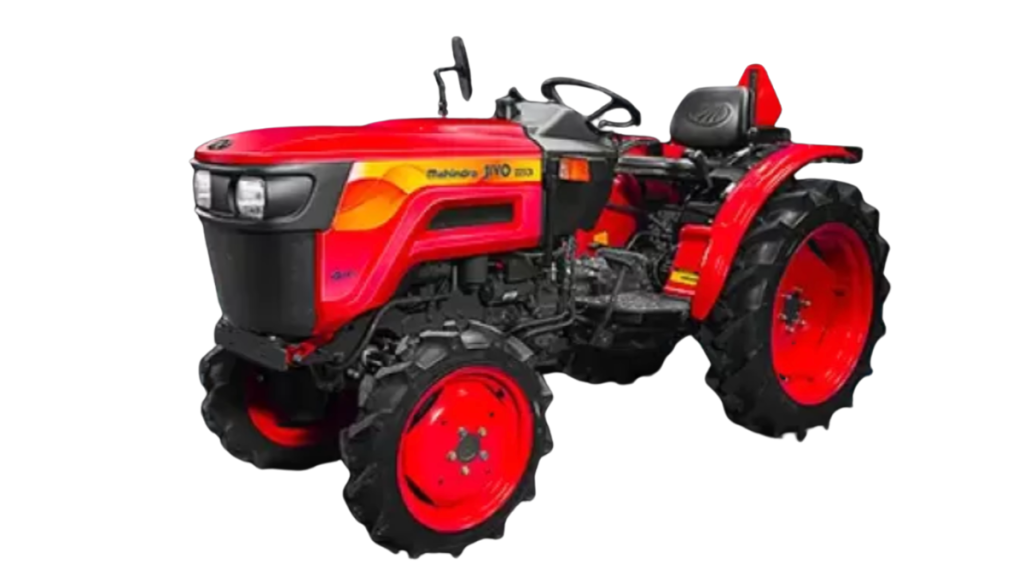Tractors are an essential part of any farm, and deciding between two-wheel drive (2WD) and four-wheel drive (4WD) tractors is an important decision that can impact productivity and efficiency. There are several key factors to consider when choosing between 2WD and 4WD tractors, such as required tractor uses, terrain and field conditions, maneuverability needs, investment costs, and maintenance considerations. Evaluating your farm’s specific needs across these areas will help determine which drive type is the better fit. This blog post explores the pros, cons, and use-case recommendations when choosing between 2WD and 4WD tractors.
Uses and Applications
Understanding what tasks and applications the tractor will be used for is the most fundamental consideration when deciding between 2WD and 4WD tractors.
2WD tractors are best suited for:
- Light to medium-duty towing and hauling applications
- Level terrain with minimal hills
- Fieldwork like planting, tilling, and mowing
- Moving equipment and materials around the farm
- Farms focused primarily on crop production
4WD tractors are best suited for:
- Heavy-duty towing up and down hills
- Off-road work conditions
- Steep, uneven, loosely packed, or muddy terrain
- Applications needing more traction, like snow blowing or grading
- Manual labor with frontend loaders and backends
- Farms with livestock or more mixed-use cases
The increased traction and maneuverability of a 4WD tractor make it more adaptable across more farm types and field conditions. 2WD is plenty capable for relatively flat terrain and lighter-duty applications that 4WD would be overkill for.
Field and Terrain Factors
The type of fields and terrain a tractor operates on should be a key determinant in deciding between 2WD and 4WD.
2WD tractors perform well in:
- Flat or gently rolling fields
- Firm, evenly surfaced dirt or soil
- Prepared surfaces like tilled land or cut crop fields
- Low ground clearance needs
4WD tractors excel in:
- Steep, uneven, loosely packed, or jagged terrain
- Hills, slopes, and muddy areas
- Rough off-road conditions through brush or overgrown land
- High centers of gravity while operating heavy front-end attachments
- Deep snow that requires enhanced traction
2WD struggles on loose, slippery surfaces like mud or snow, where traction is impaired. 4WD allows continuous operation in more varied terrain types where 2WD would get stuck or require assistance. The increased grip and drive power of 4WD make challenging off-road conditions significantly more manageable.
Investment Cost Considerations
Another factor in choosing between 2WD and 4WD is purchase price and ongoing ownership costs. 2WD models carry lower initial price tags and long-term maintenance costs compared to 4WD alternatives. Key investment considerations include:
2WD Purchase Price:
- Entry-level models are 15-30% cheaper than comparable 4WD
- Narrower range of features and capabilities
4WD Purchase Price:
- Premium pricing for base models due to 4WD components
- Higher-end features like power steering and hi-tech displays
Maintenance Costs:
2WD:
- Fewer systems and lubrication requirements
- Brakes, filters, and tyres are changed less frequently
- Repair costs for basic drivetrain breakdowns
4WD:
- Frequent lubrication for front axles and 4WD locking mechanisms
- Larger tires wear down quicker on 4WD
- More complex systems mean pricier repairs
The resale value of 4WD somewhat offsets the higher initial purchase and maintenance costs. However, 2WD still represents better pure value for money spent, especially for buyers who do not need 4WD capability.
Maneuverability Comparison
Another key tractor performance characteristic is maneuverability, which impacts ease of operation. 2WD models offer better overall maneuverability and nimbler navigation than 4WD.
Some maneuverability advantages of 2WD include:
- Tighter minimum turning radius
- More precise pathway accuracy during fieldwork
- Quicker direction changes across the range of speeds
- Narrower frame width for fitting tight spaces
4WD maneuverability drawbacks include:
- Restricted turning capability due to front-wheel drive
- Increased effort and area needed for direction changes
- More challenging to navigate cramped spaces
The tighter turning capability and handling precision of 2WD make it a better choice for farms needing to maneuver efficiently through cropland and around buildings, especially at higher speeds. 4WD allows pushing through obstructions 2WD couldn’t, but lacks in finesse what 2WD offers in nimble movement.
Best Uses Summary
To recap, the main factors favoring 2WD tractors include:
- Lower upfront and operating costs
- Excellent maneuverability and handling
- Proven performance for light-medium duty fieldwork
- Ideal for flat, even farmland focused on crops
The key benefits of 4WD tractors are:
- Ability to power through much rougher terrain
- Increased traction and stability in off-road conditions
- Towing capacity for heavy loads up and down slopes
- More versatility across the range of farm types
Carefully assess your farm’s unique terrain challenges, operating requirements, and budget when deciding between the responsive precision of 2WD tractors or the rugged power and adaptability of 4WD models. Both drive options have well-suited applications, so thoughtfully matching intended uses to tractor capabilities is key.
Conclusion
Choosing between 2WD and 4WD tractors entails carefully weighing factors like required applications, field conditions, investment costs, maneuverability needs, and maintenance considerations. Lighter-duty crop-focused farms with flat terrain favor more affordable and nimble 2WD tractors. Operations on uneven off-road landscapes needing to push through obstructions benefit from the rugged traction and towing power of 4WD. Carefully match intended tractor uses with appropriately matched specs and capabilities to select the best drive option for your farm’s needs and budget. Both 2WD and 4WD tractors deliver excellent performance when applied to well-suited use cases.




